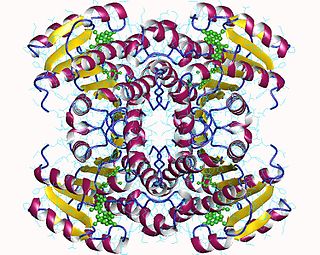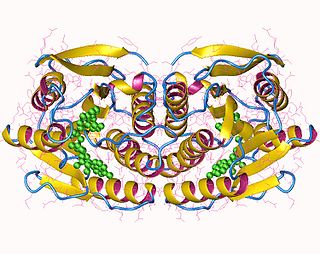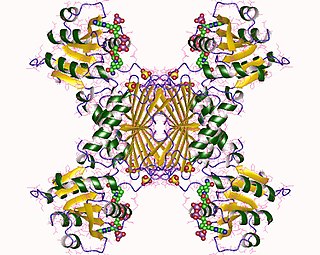| 15-oxoprostaglandin 13-oxidase | |||||||||
|---|---|---|---|---|---|---|---|---|---|
| Identifiers | |||||||||
| EC no. | 1.3.1.48 | ||||||||
| CAS no. | 57406-74-3 | ||||||||
| Databases | |||||||||
| IntEnz | IntEnz view | ||||||||
| BRENDA | BRENDA entry | ||||||||
| ExPASy | NiceZyme view | ||||||||
| KEGG | KEGG entry | ||||||||
| MetaCyc | metabolic pathway | ||||||||
| PRIAM | profile | ||||||||
| PDB structures | RCSB PDB PDBe PDBsum | ||||||||
| Gene Ontology | AmiGO / QuickGO | ||||||||
| |||||||||
In enzymology, a 15-oxoprostaglandin 13-oxidase (EC 1.3.1.48) is an enzyme that catalyzes the chemical reaction
- (5Z)-(15S)-11alpha-hydroxy-9,15-dioxoprostanoate + NAD(P)+ (5Z)-(15S)-11alpha-hydroxy-9,15-dioxoprosta-13-enoate + NAD(P)H + H+
The 3 substrates of this enzyme are (5Z)-(15S)-11alpha-hydroxy-9,15-dioxoprostanoate, NAD+, and NADP+, whereas its 4 products are (5Z)-(15S)-11alpha-hydroxy-9,15-dioxoprosta-13-enoate, NADH, NADPH, and H+.
This enzyme belongs to the family of oxidoreductases, specifically those acting on the CH-CH group of donor with NAD+ or NADP+ as acceptor. The systematic name of this enzyme class is (5Z)-(15S)-11alpha-hydroxy-9,15-dioxoprostanoate:NAD(P)+ Delta13-oxidoreductase. Other names in common use include 15-oxo-Delta13-prostaglandin reductase, Delta13-15-ketoprostaglandin reductase, 15-ketoprostaglandin Delta13-reductase, prostaglandin Delta13-reductase, prostaglandin 13-reductase, and 15-ketoprostaglandin Delta13-reductase.






